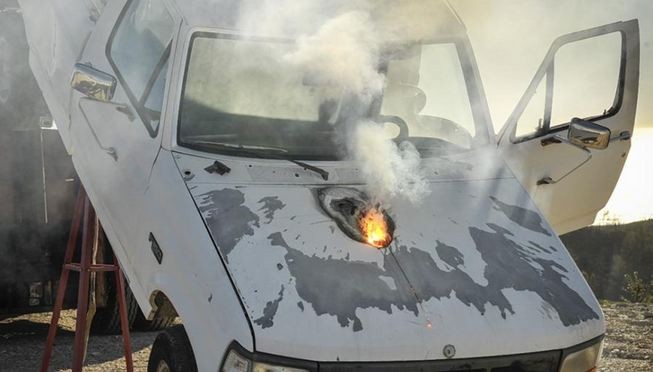A battlefield laser designed for the U.S. Army by defense and advanced technology company Lockheed Martin successfully destroyed the engine of a target truck in a chilling display of the future of warfare.
The advanced 30 kilowatt fiber optic laser punched through the engine hood and melted the cast aluminum pick-up truck engine from over a mile away. Lockheed Martin said the laser prototype burned through the engine manifold in a few seconds.
The vehicle was mounted onto a test platform with its engine running, thereby simulating a real-life military scenario.
The laser system is called ATHENA for Advanced Test High Energy Asset. It's a ground-based weapon that will be mountedon vehicles to increase its lethality.
The demonstration held March 3 was the first field test of ATHENA. This weapon uses a "spectral beam combining" technique that melds multiple fiber laser modules to form a single, high-quality beam.
This powerful beam has more destructive power than a bundle of 10 kilowatt lasers used in other systems. The ATHENA test represents the next step to providing lightweight and rugged laser weapon systems for military aircraft, helicopters, ships and trucks.
Unlike Hollywood movies that show a visible beam destroying an object, this battlefield laser shoots rapid and invisible pulses of laser light.
Defense analysts said Lockheed believes ATHENA will also be a useful against speeding explosive-laden vehicles targeting military objectives.
Keoki Jackson, chief technology officer of Lockheed Martin, said the ATHENA test "represents the next step to providing lightweight and rugged laser weapon systems for military aircraft, helicopters, ships and trucks."
ATHENA is based on the Area Defense Anti-Munitions laser weapon system, which has been used against small airborne and sea-based targets, said PCMag.
"Fiber-optic lasers are revolutionizing directed energy systems," said Jackson.
"We are investing in every component of the system -- from the optics and beam control to the laser itself -- to drive size, weight and power efficiencies."



























